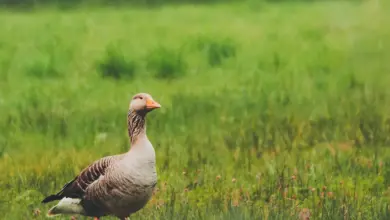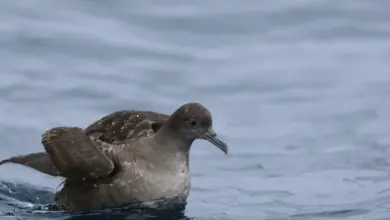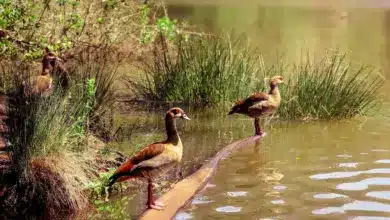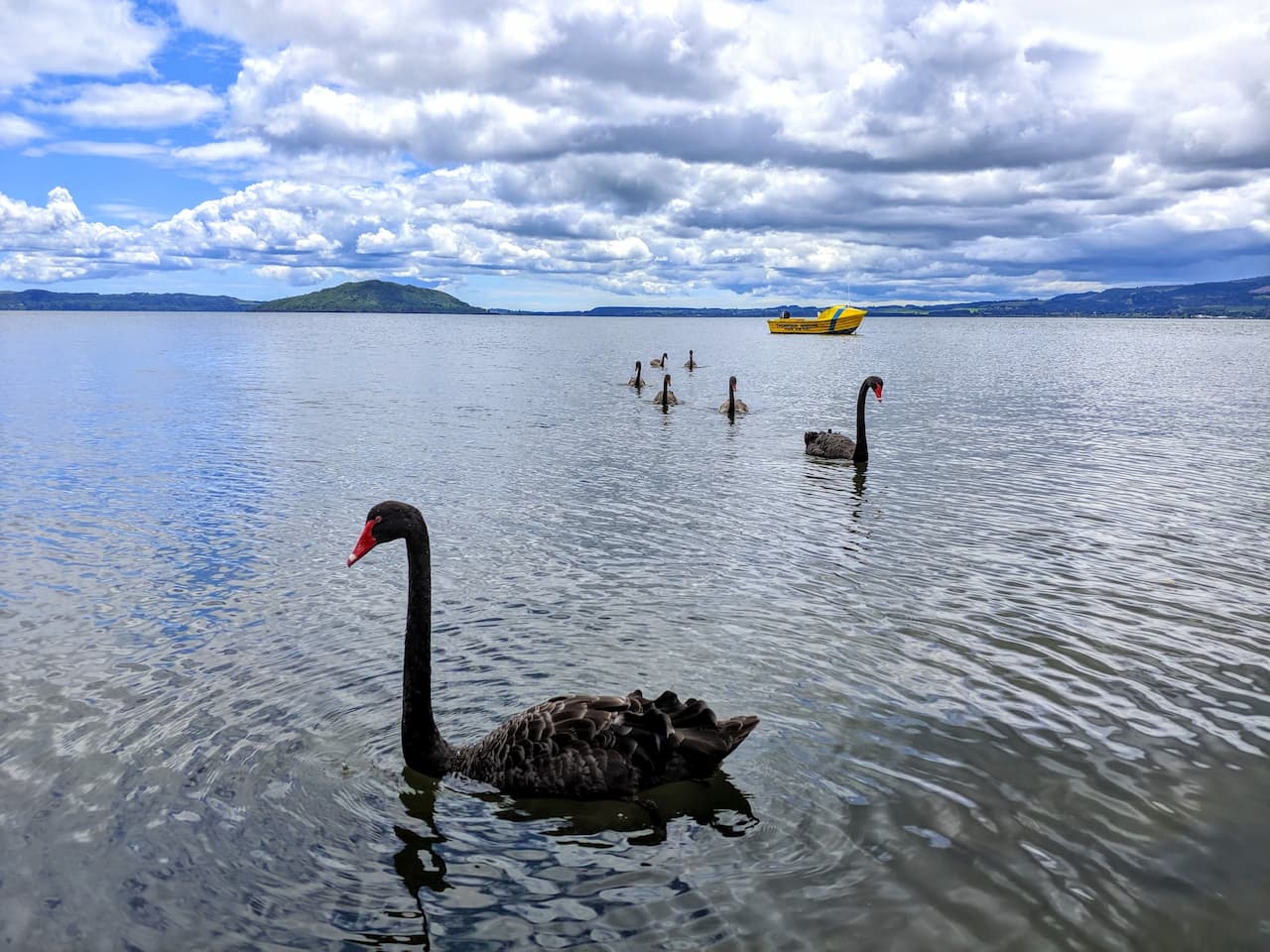The Paradise Shelducks, Tadorna variegata, is a large goose-like duck endemic to New Zealand. They are known to the M?ori as Putangitangi but are now commonly referred to as the “Paradise duck”, and are prized game birds.

Paradise Shelducks were uncommon prior to European settlement, however, changes to habitat caused by the conversion of forest to pasture, and the deliberate provisioning on ponds by hunting groups, have led to a large increase in the numbers of these ducks.
The Paradise Shelducks usually live as pairs, grazing on grass and weeds, and will raid crops, particularly when molting.
Description:
Both the male and female have striking plumage, the male has a black head and barred black body, the female a white head with a chestnut body.
Breeding / Mating:
Paradise Shelducks form long-term pair bonds, often lasting for life, and defend territories. They have a long breeding season which is between August through December.
They reach sexual maturity after two years and build nests lined with grass and feathers hidden in high grass, hollow trees or beneath rotting logs. The mean clutch size is around nine eggs. Chicks fledge after eight weeks.
History
Before Europeans settled in New Zealand the Maori hunted Paradise Shelducks in favoured districts. Hunting was done outside the breeding season when the birds were molting and could not fly. During the breeding season hunting them was forbidden. This conservation and selective hunting system ensured good supplies of food.
Paradise Shelducks were uncommon prior to European settlement, however changes to habitat caused by the conversion of forest to pasture, and the deliberate provisioning on ponds by hunting groups, has led to a large increase in the numbers of these ducks.
The name
The genus name Tadorna comes from Celtic roots and means “pied waterfowl”, essentially the same as the English “shelduck”.
Relevant Resources
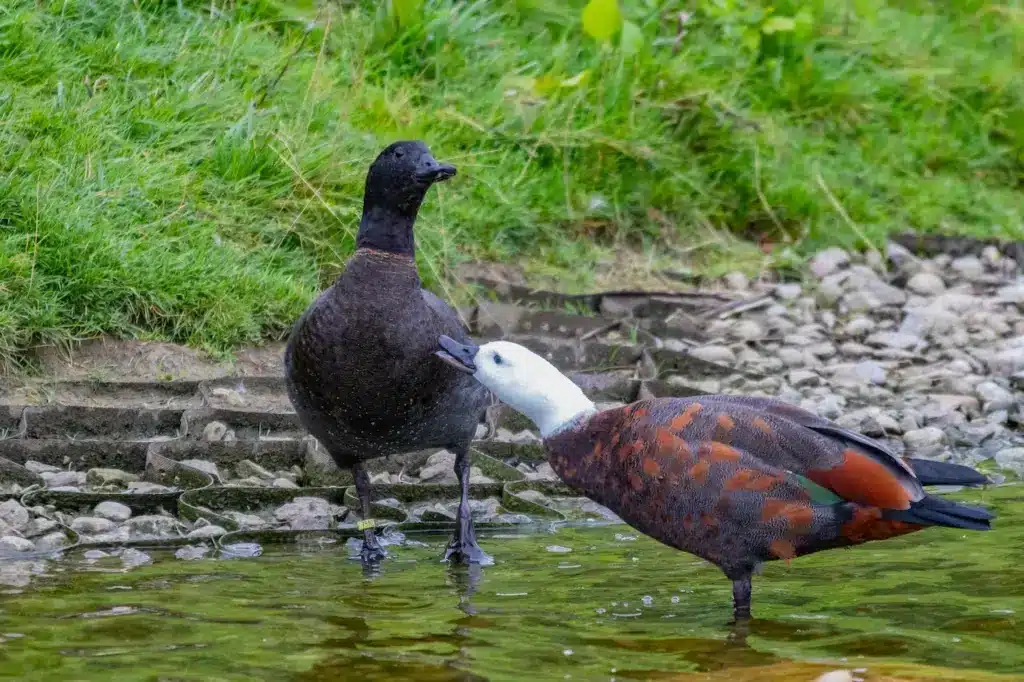
Ducks generally feed on larvae and pupae usually found under rocks, aquatic animals, plant material, seeds, small fish, snails and crabs.
Feeding Ducks …
We all enjoy ducks and many of us offer them food to encourage them to come over and stay around – and it works! Who doesn’t like an easy meal!
However, the foods that we traditionally feed them at local ponds are utterly unsuitable for them and are likely to cause health problems down the road. Also, there may be local laws against feeding this species of bird – so it’s best to check on that rather than facing consequences at a later stage.
- Foods that can be fed to Ducks, Geese and Swans to survive cold winters and remain healthy when food is scarce in their environment.
Please note that feeding ducks and geese makes them dependent on humans for food, which can result in starvation and possibly death when those feedings stop. If you decide to feed them, please limit the quantity to make sure that they maintain their natural ability to forage for food themselves – providing, of course, that natural food sources are available.

